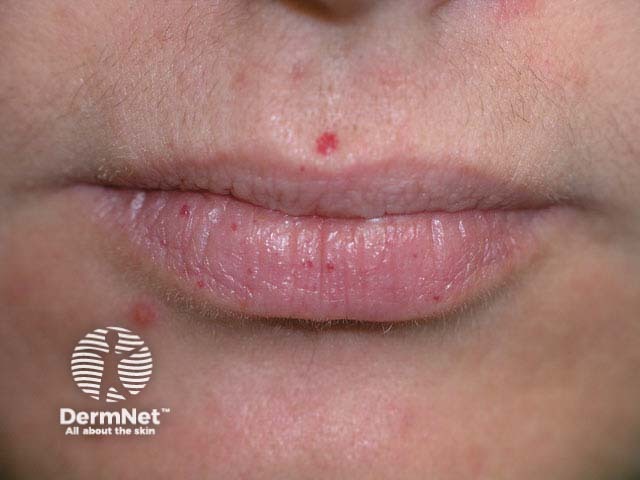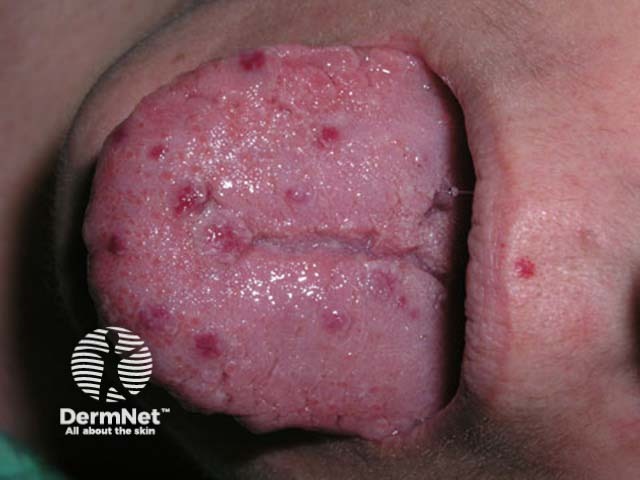Main menu
Common skin conditions

NEWS
Join DermNet PRO
Read more
Quick links
Telangiectasia – 10 cases
This quiz tests your skills in identifying different types of telangiectasia in 10 cases.
Telangiectasia refers to permanently dilated small blood vessels (arterioles, capillaries and venules). They present as small linear, arborising, spider or papular red lesions. They may be congenital or acquired, and localised, unilateral or widespread. Genetic, hormonal and environmental factors may be important in their pathogenesis. Primarily of cosmetic significance, they may be safely ignored or treated by electrosurgery or, preferably, by an appropriate laser.
For each of the ten cases, study the image(s) and then answer the questions. You can click on the image to view a larger version if required.
Each case should take approximately 2 minutes to complete. There is a list of suggested further reading material at the end of the quiz.
When you finish the quiz, you can download a certificate.
Case 3


Make a diagnosis.
Hereditary haemorrhagic telangiectasia – perioral and tongue lesions
What features distinguish this condition from other causes of telangiectasia?
Telangiectasia is a feature of many hereditary and acquired syndromes.
Hereditary hemorrhagic telangiectasia (Osler-Weber-Rendu disease) is a dominantly inherited autosomal disorder characterised by skin, mucous membrane, and visceral telangiectasia, recurrent epistaxis, and visceral haemorrhages (especially gastrointestinal). Dark red telangiectatic patches and plaques appear during childhood on the face, lips, tongue, palms, and fingers. Arteriovenous malformations may be present in the lungs, central nervous system, liver and gut. Mutations have been identified in genes responsible for transforming growth factor-β receptors.
